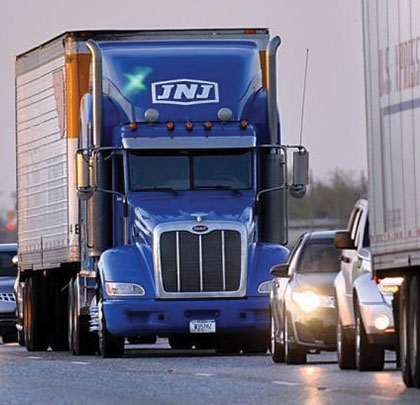The Federal Highway Administration (FHWA) has established several programs and policies to mitigate the safety and mobility impacts of work zones. One such policy is the Work Zone Safety and Mobility Rule. This Rule requires agencies that receive Federal-aid highway funding to develop and implement an agency-level work zone safety and mobility policy, procedures to support policy enactment, and procedures to assess and manage work zone impacts of individual projects.
ROAD USER DELAY
One readily apparent work zone impact is the road user delay caused by construction and maintenance operations. This delay can be converted into road user costs to provide an economic basis for comparing the impacts of various work zone management options. Since the implementation of the Rule, the consideration of road user costs for Federal-aid highway projects has increased. However, maintenance operations are often non-Federal-aid projects, so the same level of assessment regarding the potential safety and mobility impacts is not typically done. However, traditional maintenance procedures can sometimes result in significant road user costs. For example, a maintenance project may require the closure of one lane of a two-lane section of interstate for a week. Typically, the agency installs barrier to protect workers, so the lane closure is left in place 24-hours a day for 7 days. Dependent upon the traffic volume, this scenario may cause significant road user delays. An alternative could be to only close the lane for work during non-peak periods and protect workers with a mobile barrier system when they are actually out on the road. This would allow both travel lanes to be open when work was not occurring.
CALCULATING THE COST
To get an idea of the road user costs incurred by such scenarios, Texas A&M Transportation Institute (TTI) researchers used simple input-out analysis techniques to calculate the road user costs. A work zone capacity of 1,429 vehicles per hour per lane was estimated, assuming 17 percent commercial vehicles in the traffic stream. Typical time-of-day distributions were applied to a range of Annual Average Daily Traffic (AADT) values for a range of roadway lane closure situations. For each situation, a midday and nighttime temporary lane closure was compared to a 24-hour lane closure. A 2014 average cost of time for passenger vehicles of $21.38 per vehicle hour and $88.45 per vehicle hour for commercial vehicles were applied to the difference in estimated delays between the temporary and 24-hour closure options.
Table 1 shows the average daily traffic (ADT) volumes at which the difference in road user costs exceeds $500,000 based on the number of lanes remaining open in one direction of travel. For a single lane closure on a two-lane interstate, significant road user costs begin to occur at 60,000 vehicles per day (vpd). Therefore, if maintenance operations are planned for an interstate with an ADT greater than or equal to 60,000 vpd, it would be better to conduct the work during non-peak periods and protect workers with a mobile barrier system so that the lanes could be returned to vehicle use during peak hours. Likewise, significant road user costs for two and three remaining lanes open begin to occur at 120,000 vpd and 180,000 vpd, respectively. Overall, the information in Table 1 shows that road user costs are important to consider with maintenance operations. ■
About The Author:
For more information, visit the Federal Highway Administration at www.fhwa.dot.gov.
_________________________________________________________________________
Modern Contractor Solutions, February 2015
Did you enjoy this article?
Subscribe to the FREE Digital Edition of Modern Contractor Solutions magazine.

Maintenance Operations


